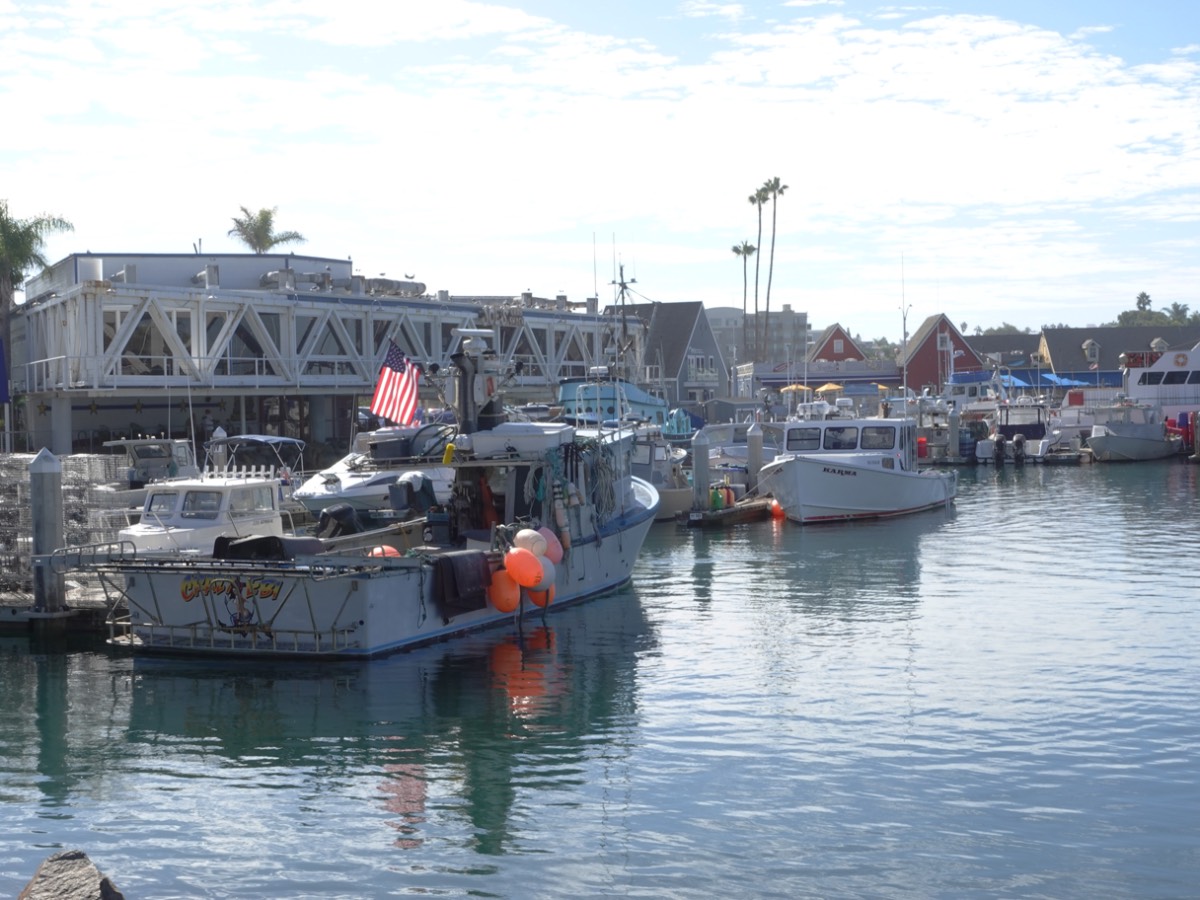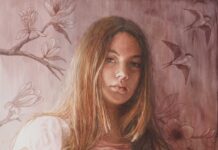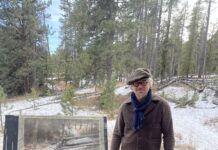Geoff Allen painted this scene in Oceanside’s harbor, located north of Encinitas, California. The clouds in the water show that it was a well-lit day. “There was a new boat with bright red buoys that were reflected in the water,” he says. “That saturated color drew me in. I saw this the weekend before and it kept creeping back into my mind — a good sign. It’s so nice to have that blast of color and a backlit flag. I also liked how the two boats opposed each other, and the distinctive A-frame roofs and tall palms made for a background destination. I just had to edit out the contemporary and complicated building behind my main interest.”

STEP 1
Allen generally starts with a small sketch in which he works out the proportions, placement of elements, and light source and conditions. “In this case, the clouds in the water were key, and I wanted to integrate them into the landscape,” he says. “The idea was to break up the shapes of the middle and foreground planes and provide pathways for the eye.”

STEP 2
The artist works on a ball-head tripod that allows him to tilt his paper in any direction to get the effects he wants. “It’s hard to show in still shots, but I begin many of my plein air works by splattering a watery warm mixture,” says the artist. “Splattering forces me to commit, and immediately my hesitations are gone. I splatter in order to form natural edges, plus the extra water provides the ensuing wash with water.”

STEP 3
Allen stays in the loose-wash stage of his process to get the atmosphere and the gradations of color and value he desires. “Here, I tried to darken the foreground water because this represents the sky directly above, which is much darker than the hazy cool horizon blue, and then portrayed the dark of the water’s depths beyond. If there is a color, I’m interested in saturating it. If I’m looking for a glow, it goes in this stage. Every value on the paper represents the lightest value I see in that area.”

STEP 4
The next wash is typically a unifying one. “As best as I can, I try to connect these areas, breaking edges of natural and manmade shapes, allowing them to mingle,” Allen explains. “I shift hues in the wash as I go from object to object. This is the most difficult moment to photograph because everything must happen while the paper is wet. I move from left to right, back to front, top to bottom. And I always make more mixture than I think I will need.”

STEP 5
The painter then moves on to glazing key passages, adding accents, and connecting areas to ensure compositional harmony. “Here I bumped up the darks inside the nearest boat to bring it forward,” says Allen. “I ran connecting ripples between the shadows of the two boats so that they would appear to be on the same plane. In a risky move, I added the palms hanging down in the upper lefthand corner, and in the opposite corner I put darker reflections in the water that helped define my white clouds. The last thing I added was the palm tree that did not exist in the actual scene. I just felt it needed one more thing.” At this point, the artist packed up to go home.

FINAL STEP
“In the studio, I often come back with fresh eyes,” says the artist. “It’s good to forget about it for a while so my subconscious can work on it. I always get to a point where those last little things can totally screw it up or it might make it all work. Sometimes the painting is done on location, but a lot of times I’ll add something to it. For this piece, I put a greenish glaze over the foreground reflections to connect it to the other reflections, darkened the areas around the umbrellas, and pulled some of the pigment off the buoys so they would be less saturated and more luminous.”

Watercolor artist Geoff Allen is featured in the December 22-January 23 issue of PleinAir Magazine.







